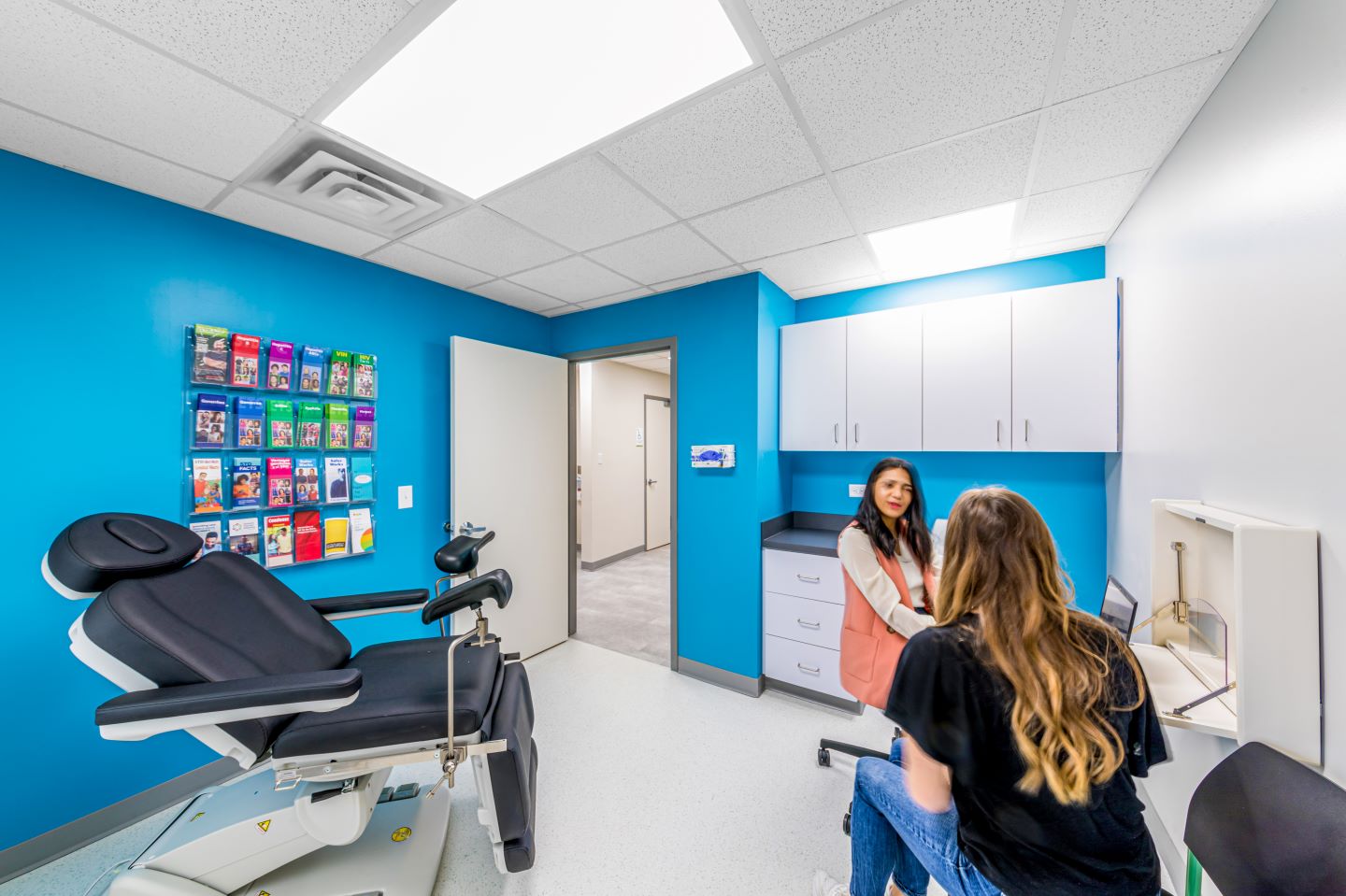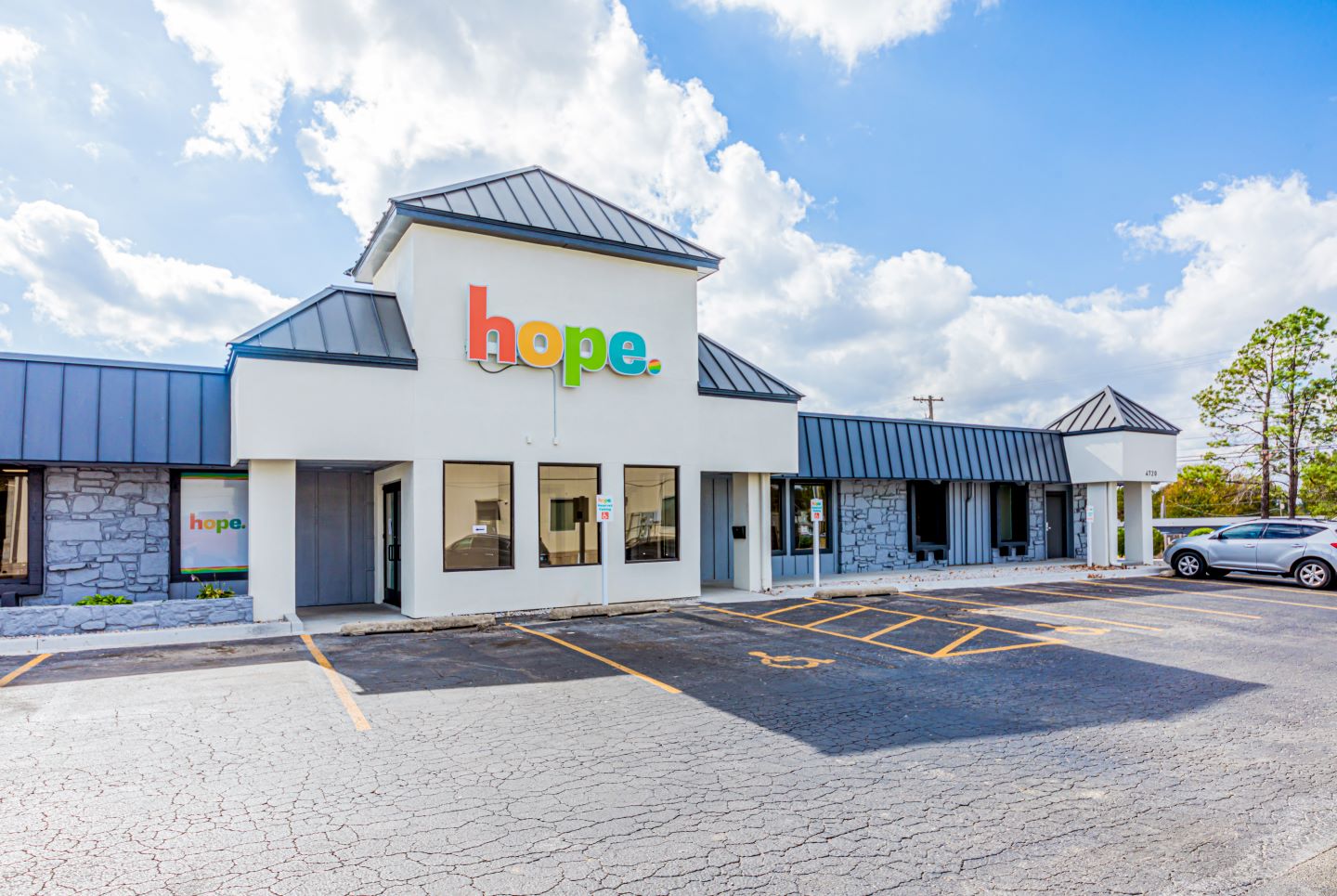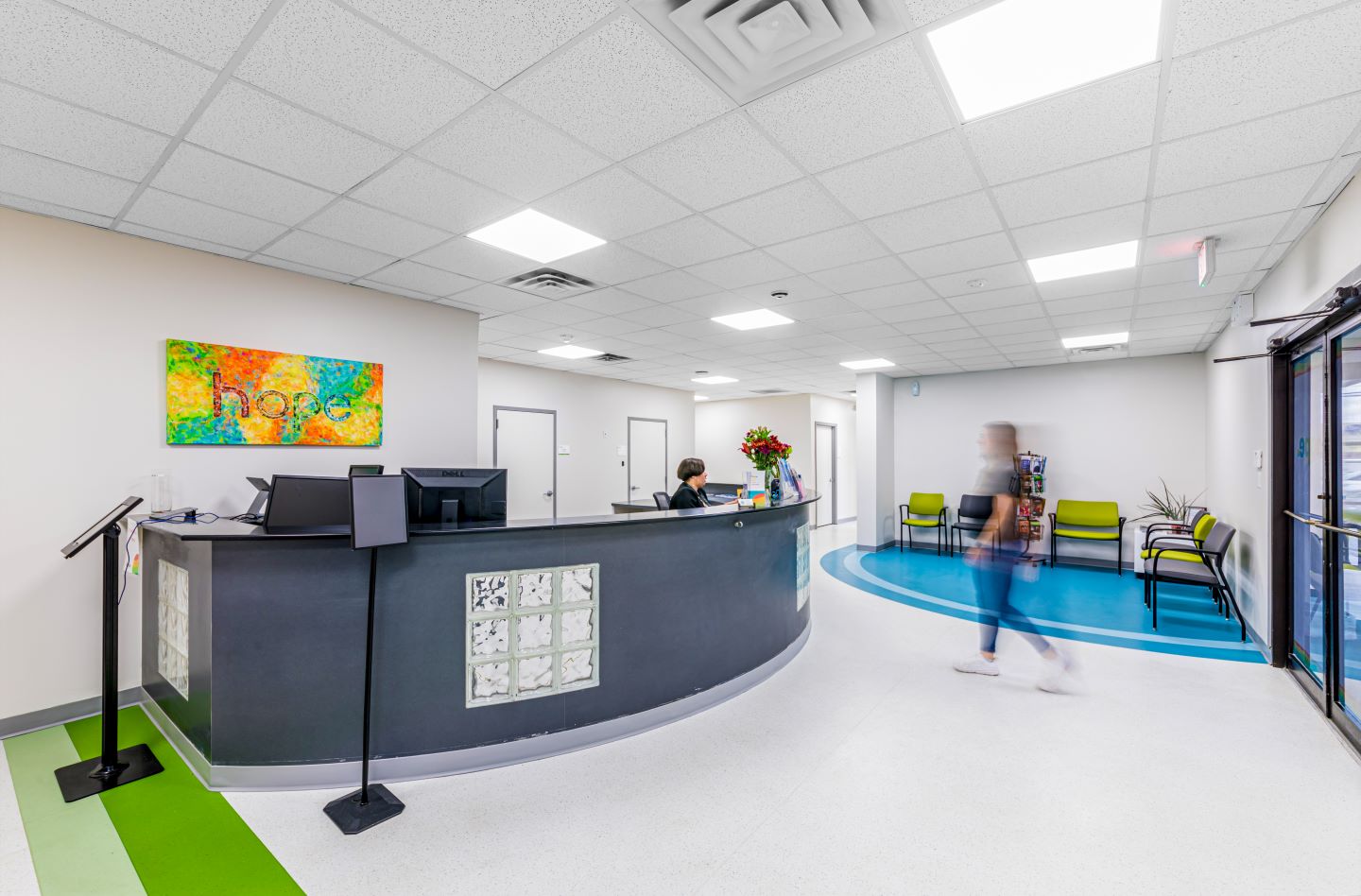Working with Health Outreach Prevention Education, Inc., our firm redesigned an 8,500-square-foot space to expand public health access in Tulsa, Oklahoma. The HOPE Testing Clinic provides care for the uninsured, the underinsured, and the underserved through education, outreach, an after-hours preventive vending machine, and testing services. As HOPE’s in-person testing clinic, the facility presents confidential care options for the city of Tulsa and the greater community of Oklahoma.
For the HOPE project, our team’s continual focus on client satisfaction, non-judgement, confidentiality, being culturally responsive, and carefully considering design choices reflected these values to the client, patients, and the community."
Melissa Covington
Expanding Care Options for Tulsa, Oklahoma
The new clinic includes testing rooms, a spacious waiting area, administrative offices, support spaces for staff, and two secure vending machines. While one vending machine is located inside, there is an additional machine outside of the building for after-hours access. Keeping security in mind during preliminary design, the exterior vending machine requires a code, distributed by HOPE, in order to dispense the products. Inside the machine, there are sterile syringes, contraceptive kits, nasal Narcan, and other preventative supplies at no cost to the patient.

The HOPE Testing Clinic’s design facilitates a smooth workflow while minimizing patient wait times.
Prioritizing the Patient
It is crucial to consider the patient’s privacy in the facility when designing public health spaces. For the HOPE Testing Clinic, privacy was relayed through key design decisions such as the incorporation of the exterior vending machine. On the interior, the team utilized workflow assessments to protect patient privacy, including appropriate spacing between the waiting room and the testing areas and designing an additional exit located at the back of the building for patients to use after their appointment. Privacy is also prioritized by establishing a welcoming and comfortable atmosphere in the waiting room through clean lines, color, and natural light, putting patients at ease from their arrival at the facility.

The facility’s vibrant and colorful façade reflects the mission of HOPE to the community of Tulsa, Oklahoma.
As HOPE is an in-person testing clinic, garnering recognizability in the community is essential for establishing patient retention. By analyzing the logo, our team was able to integrate HOPE’s corporate entity into the architectural design. On the façade of the clinic, the logo is centrally located in its standard colors and font, increasing name awareness and establishing HOPE in the Tulsa healthcare community. HOPE’s red, yellow, green, and blue coloring extends into the facility’s interior, including the spacious waiting area and testing rooms. The team utilized the facility’s existing skylight and energetic colors to create a vibrant and reassuring environment, reflecting the care that the clinic provides. While neutral colors are a common occurrence in healthcare architecture, the bright colors reinforce HOPE’s mission statement and intended contribution.

The HOPE Testing Clinic opened to the public on October 15, 2024.
A Commitment to the Community
At the new location, the HOPE Testing Clinic received over 35 people on its first day, showcasing the need for these testing facilities in underserved communities. Considering a non-profit’s history, purpose, and values in planning and design was critical to achieving the goals for this type of project. For the HOPE project, our team’s continual focus on client satisfaction, non-judgement, confidentiality, being culturally responsive, and carefully considering design choices reflected these values to the client, patients, and the community.